Part 2-EASTERN EUROPE: STRUDEL, SCHNITZEL AND STRAUSS, A FEW OF OUR FAVORITE THINGS
FROM CONCENTRATION CAMPS TO TRENDY KRAKÓW
Part 1 was The Razing and Rebuilding of Warsaw
I grew up with the horror stories of the Holocaust, from family whispers to the stacks of books I devoured. (I can’t count how many versions of The Diary of Anne Frank I have read or seen acted.) Just knowing our Odysseys Unlimited tour included a visit to Auschwitz (known in German as Oswiecim) and its nearby sub-camp, Birkenau, made me edgy. We were travelling to Kraków, but the visit to the camps were scheduled for the earlier part of the day. Could I handle seeing the reality which has heretofore only been personal stories or movies?
I propelled myself forward and listened attentively to the statistics of how many were killed, how many survived, and why it has been a Polish government project to preserve the camps and their wretched history. I shuddered when we passed by a gas chamber, held my breath when we entered barracks that still echoes the misery of their cramped, emaciated inhabitants, and
tightened when we saw display windows crammed with kids’ shoes, women’s shorn hair, thousands of eye glasses, and stacks of suitcases scarred and broken. I forced myself to silently chant, Never Again!
Seeing the concentration camps was a moving experience, but I couldn’t wait to leave. Kraków awaited.
Where we stayed:
Kraków is an eye-opener after enjoying the rebuilt city of Warsaw, leveled by World War II bombing. The Nazi government didn’t destroy the city because they wanted it for themselves, so Old Town and the array of preserved architecture still emanates grandeur without being excessive. Hotel Pod Roza is Krakow’s oldest hotel, built originally in the 14th century as a private home and becoming a hotel in the 17th. The location is perfect for being a short walk from all the iconic attractions clustered around the Main Market Square where canopied restaurant tables spilled out onto the plaza during our July visit. The plaza burst with the boisterous energy of more than 200,000 college students representing 10-university level local institutions and the thrum of tourists clattering across cobblestone streets or appreciatively applauding the many musicians, break dancers, or buskers who plied their skills before an impatient audience.
What we learned:
The origin of the words “soldier” and “salary” is Polish, by way of ancient Rome. Salary, from the Latin word salarium and the root word for salt, was used to specify the amount of money allotted to a Roman soldier to buy salt, which was an expensive but essential commodity. What does this have to do with Poland? The country has mined salt for more than 700 years.
The university district was originally the Jewish district, built in the 15th century.
Krakow is a city of music. Day or evening, we had our choice of concerts, from klezmer music to classical … with dinner or alone. We attended a lively klezmer concert at five, ate dinner, and was at St. Peter’s & Paul’s Church by 8 for a Four Seasons Concert featuring music by Vivaldi, Wieniawski, Pachel Bel, Chopin, and Mozart.
One of the aspects I quite enjoy about being on a professionally-guided tour is hearing about the local legends and traditions that provide insights that book reading will not. Our fabulous Odyssey’s Unlimited Tour Director Silvija Marta Horsta regaled us with stories about holiday customs in many of the countries. For instance, she said that in Baltic countries, “Everyone is entitled to a real Christmas tree.” People generally cut their own from a forest. Another is to watch “Home Alone” movies, which are shown regularly on Christmas Eve, while burning an advent candle.
Christmas Eve is also when the family’s big meal is eaten. “Has to be more than 10 dishes. No red meat. Many soups, salads and pierogis,” she explained. Popular sweets would include gingerbread. Before dinner, a wafer is passed to the oldest person, who breaks off a piece, makes a wish, and passes it on until everyone in descending chronological age has had a piece. What drew a laugh from me was hearing that “To receive a gift, you must recite a poem or sing or perform in some other manner!” Gifts aren’t brought in by Santa, but by Baby Jesus. In the Czech Republic, the favorite Christmas drink is mulled wine. The main Christmas dinner is carp (fish) that has been swimming in the host’s bathtub until ready to be cooked.
Easter is another special day of festivities. In Poland, baskets of food wrapped in lace are prepared the day before Easter. In Kraków, you go to your priest in the church or in the Main Market Square for the food baskets to be blessed. While Eastern European countries traditionally dye eggs, it’s not with food coloring. Instead, eggs are covered with fruits and leaves, wrapped in onion skins, then boiled… all of which creates colorful patterns. Easter Monday has other traditions. In Poland, people splash water on each other. In Hungary, they spray perfume on others. The splashing, which originated with splashing water on cows to evoke milk production, symbolizes fertility.
What we saw:
There are 140 Roman Catholic churches within Kraków’s boundaries. No, we did not visit them all, but we were impressed with the history and architecture of Wawel Cathedral. After all, how could we not be pulled into thinking “What?” upon learning that a 12- year-old girl named Jadwiga was crowned King of Poland in 1384 at Wawel Cathedral because she wasn’t officially allowed to be Queen without being married. She was only King for a short while. She was married off at 14 to the 26-year-old Jogaila, King of Lithuania, thus uniting the two countries. She spoke six languages, got her husband to adopt Christianity, release all Polish prisoners and join efforts against the Teutonic Knights.
The 1,000-year-old Cathedral s notable in multiple ways. All Polish monarchs have been crowned in this Gothic masterpiece. The Church is adorned in local red marbles and granite. A gold-domed roof tops the Sigismund Chapel, a prime example of Renaissance design. There is some dispute whether the gold provided by Queen Anna Jagiellonka in 1591.still crowns the chapel or whether it has since been gold-plated. Just outside the Wawel Cathedral stands a statue of General Kosciuszko. Though known in Poland for defending human rights and the ideals of freedom, justice and equality for all, American historians regard him as one of General George Washington’s most important military engineers and strategists of the Revolutionary War, credited with the Continental Army’s victory against the British at Saratoga.
Over the years of expansions and revisions, a castle was added to the Cathedral and became the seat of the Lower House. The castle has five rooms whose walls are covered with patterned leather. Many of the ceilings feature intricate wooden architectural design elements, such as the wooden squares inserted with hand-painted roses in the King’s Quarters. Nearly 138 tapestries are displayed at a time, rotated with many preserved in storage. During WWII, they were safely hidden in Canada and Great Britain, who returned them in 1961.
The focal point of Kraków’s Old Town is St. Florian’s Gate, located several blocks from our hotel on Florianska Street. Florian was a 14th century Roman soldier who became patron saint of the city. The Polish gothic tower is a remnant of the fortifications built to repel Turkish invasions.
The Main Market Square, reputedly larger than St. Mark’s Square in Venice, Italy, once was the chief marketplace for cloth and salt vendors. These days the Square is surrounded by restaurants, souvenir and flower shops, entertainers who vie for tossed coins, and adorned horses drawing white carriages filled with tourists in an endless loop day and night.
Fronting many significant buildings are metal models of the location, with info inscribed. Each also contains the information in Braille, a big effort by the city to enable the blind to get around.
We all puzzled at rounded cement slabs embedded into the front sidewalk of residential doorways. Each slab has five or six fist-sized holes. Turns out that in medieval times, each hole was used as a fire extinguisher for torches by visitors and residents.
In the latter part of the 15th century, fire destroyed the Jewish Quarter. It was rebuilt and by WWII, about 65,000 Jews claimed residence. Today there are about 1,000, but none registered are Orthodox. We saw the oldest remaining synagogue in Poland; a long, squat building noticeable for what it indicates about the separation of the sexes. Men entered through the bricked part and women through a section painted yellow. The Old Synagogue (Stara Synagoga) now houses a Jewish museum and is one of two gothic-styled synagogues left in Europe. The only active synagogue in Kraków is Synagogue Remuh.
Helena Rubenstein’ cosmetics line once rivaled Max Factor, Estee Lauder, or Elizabeth Arden for international recognition. Her story is as stunning for overcoming the strict reins of being born in 1872 to an Orthodox Jewish family as it was how she pulled off this amazing business feat. At 16 her father pushed her to marry a 60-year-old man. She refused and fled to France and then Australia, where women were allowed to earn money. At some point, she went to stay with a sheep farmer relative, where she discovered that the lanolin from sheep could be a key ingredient for skin cream. She became the first self-made female millionaire in history. One of Helena Rubenstein’s most famous sayings that I’m sure would become a meme today was: “There are no ugly women, only lazy ones.”
We passed by a cement plaza near (Otto) Schindler’s Factory, now open as a museum. There are chairs strewn in disarray on the plaza, representing an incident that occurred during the Nazi occupation. Nazi police showed up at a Jewish elementary class one day and ordered them to follow. As a way to comfort the children and lessen their fear, their teacher ordered them to take their chairs as they would be needed at their next destination. When the children were eventually removed to a concentration camp, the chairs remained strewn about the plaza. We were told that Budapest, Hungary has a similar exhibit, but with shoes.
We journeyed just outside Kraków to tour a salt mine. I think I can speak for the immediate reaction of our group of 24 tour members: visions of dark, dank and a thoroughly boring few hours. How utterly wrong we were. By the end of our visit to the Wieliczka Salt Mine, reactions were more of amazement and many later cited it as a highlight of our Discovering Eastern European tour.
We rode creaky shaft elevators down to 64 meters, a fraction of the mine’s 300 KM depth. Wieliczka was mined for 700 years until salt became so widely available and inexpensive that 24 years ago, the mining ceased and the mine converted to a museum. During WWII, the Nazis manufactured aircraft parts inside the mine’s caverns. As we walked along slightly damp paths further down into the depths, our guide said seven generations of her family had worked there. She did too, but in the office. No woman was ever allowed to work underground. She noted the perfectly preserved wooden walls, explaining metal would have corroded in the damp, salty environment. She flashed a light on the bare walls. Where shiny, there is still salt. Where dark and rough, the salt was stripped away.
All that was interesting, but what roused our awe as we eventually descended to 125 meters, were the intricately-carved painted statues of royal and religious figures, magnificent chandeliers, and carved vignettes featured in lit niches… all from salt. The most incredible sight of all was the enormous St. Kinga’s Chapel of the Blessed King, located more than 100 meters below the surface. For about 70 years, three miners carved not just the chandelier, but a detailed mural of The Last Supper. This cavernous room’s beauty attracts classical concerts and weddings. Mass is held here at 8 am on Sundays. By next year, the museum expects to add a tram ride through the corridors. Naturally, there’s an underground gift shop, ablaze with light bouncing off salt figures or shelves of salt lamps and packets of flavored salts.
What we ate. What we drank:
I was surprised to learn that the soft pretzel bagels I grew up eating from vendor carts in Brooklyn (NY) and which have become a staple at American festivals, malls and big box stores, originated in Kraków. Busy street corner vendors offer the stacks of warm oversized obwarzanek krakowski, sprinkled with baked-on salt, poppy seeds, or sesame seeds, from glassed in carts.
Basic menu items at restaurants inevitably include pork, duck, rye breads, and pierogis stuffed with anything the chef has imagined. Poland does not produce wines, but restaurant offerings usually include those from the United States, Italy and France.
Polish donuts don’t have holes. The pączki are fluffy, filled with sweet creams and fruit jellies, and are usually covered with powdered sugar, icing, glaze or bits of dried orange zest.
Polish pierogis, which I have eaten most of my life, have an intriguing history. A Dominican monk invented them as an inexpensive way of feeding the poor. His kind generosity and chef-like creativity scored points with the populace. To honor Saint Jack of Dumplings (as he became known), there is an annual mid-August Pierogi Festival held in the Main Market Square. The winner is decided by the popular votes and receives a statue of Saint Jack holding a bowl of pierogis.
My husband, Russ, now tells everyone who will listen, that the best French fries he’s ever had in his life were at Miód Malina Restauracja. We arrived during a brief lull, so managed to get into the quaint usually-packed restaurant highly recommended by both Silvija and our local guide, who claimed the stuffed cabbage was even better than her mother’s. I was doubtful anyone’s would be better than my Aunt Fanny’s, but was eager to try. My two delicate cabbage rolls covered in a light, creamy tomato sauce were a different style, but quite yummy. Russ and I shared a sautéed spinach, garlic and cheese dish that vanished before our eyes., He devoured a tender cooked-perfectly ribeye bathed in a peppercorn sauce and the aforementioned steak fries, lightly fried with rosemary and seasonings. We drank an Ironstone Old Vine Zin 2016 with the meal that played well with our dishes. Russ finished the meal with vanilla ice cream, hot raspberry mousse, whipped cream and raspberries.
Coming in Part 3 – Breakfast in Poland, Lunch in Slovakia and Dinner in Hungary
www.hotel.com.pl
www.wawel.krakow.pl/en
www.visitkrakow.com/restauracja-miod-malina/
www.krakow-info.com/schindler.htm
www.wieliczka-saltmine.com
Karen Kuzsel is a writer-editor based in the Orlando area who specializes in the hospitality, entertainment, meetings & events industries. She is an active member of ILEA and MPI and is now serving on the 2017 – 2018 MPI Global Advisory Board for The Meeting Professional Magazine for the third consecutive year. She is a member of the Society of Professional Journalists. Karen writes about food & wine, spas, destinations, venues, meetings & events. A career journalist, she has owned magazines, written for newspapers, trade publications, radio and TV. As her alter-ego, Natasha, The Psychic Lady, she is a featured entertainer for corporate and social events. karenkuzsel@earthlink.net; www.ThePsychicLady.com; @karenkuzsel; @thepsychiclady. Food photos for this series by Karen Kuzsel.
All other Photos by Russ Wagner, a retired government planner/builder who has a passion for trains, travel and taking photographs.



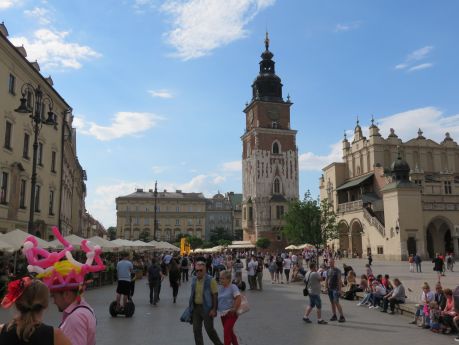


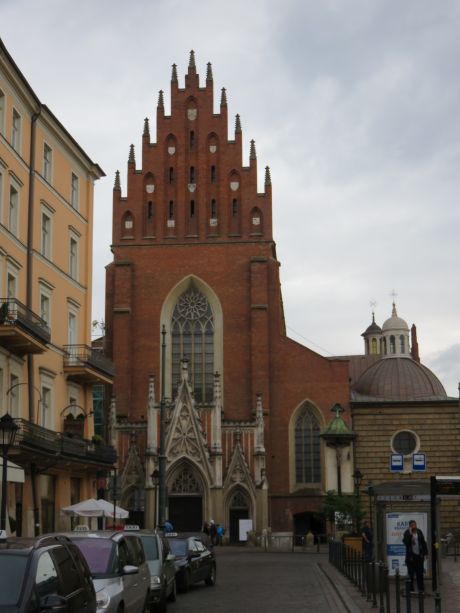
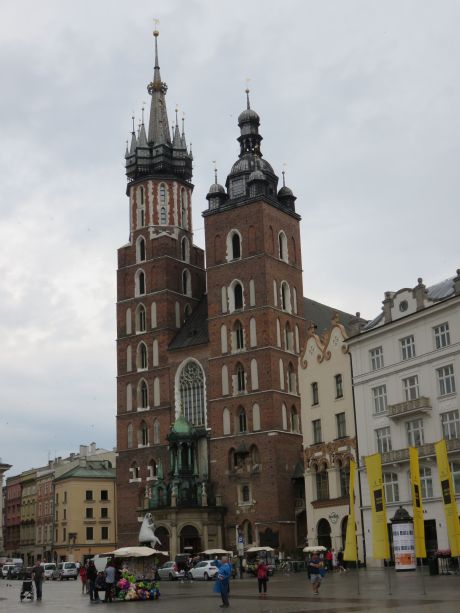
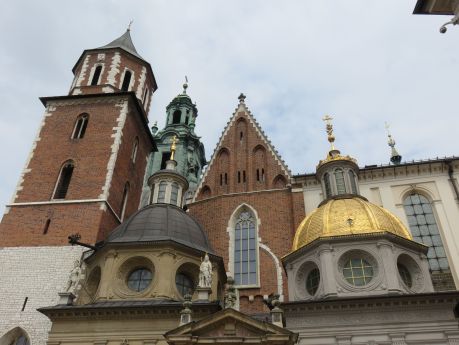
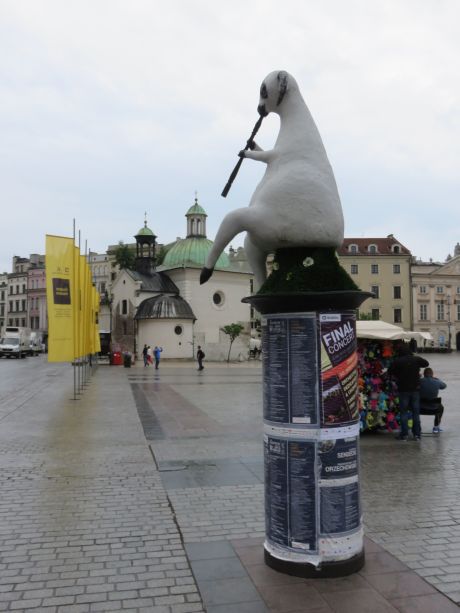


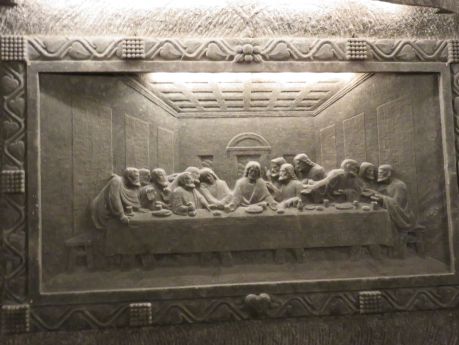




Such fantastic descriptions!
I think of you as the Queen of descriptions that enable me to “see” the picture you are painting. Thank you most sincerely.
Very detailed and educational.
Thank you. Considering how well read and educated you are, I appreciate the feedback.